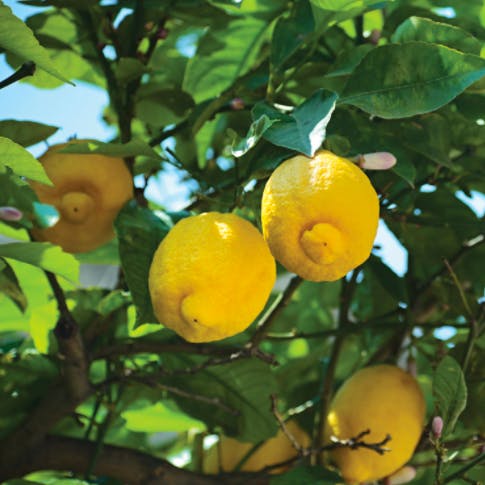A Get-Started Guide to Cultivating Citrus Fruit
With their fragrant flowers, rich green foliage, and delicious fruit, citrus are among the most rewarding trees to grow. Those living in USDA Hardiness zones 9–11, where temperatures don’t normally drop below 20 degrees Fahrenheit, can grow citrus outdoors year round. In colder regions, the trees should be grown in containers and brought inside for winter. But the warm temperatures of the summer months help sweet citrus thrive. Consider the following tips when embarking on your fruitful venture.
GROWING CITRUS OUTDOORS
Citrus are easy to grow, untroubled by most pests in a home garden environment, and adaptable to a wide range of soil quality. If the soil is heavy clay, water the plants slowly and deeply with drip irrigation laid around the edge of the leaf canopy so the moisture is absorbed into the soil. In loose, sandy soil, water more frequently. Citrus prefer deep, infrequent watering. Ideally the moisture should penetrate down 36 inches. Between watering, the soil should become almost completely dry, as citrus will languish if over-watered.
The key nutrients for healthy citrus are nitrogen, phosphorous, potassium, magnesium, calcium, sulfur, manganese, zinc, copper, iron, boron, and molybdenum. Most California and Arizona soils have all the necessary nutrients, except nitrogen. Have your soil tested and analyzed for citrus requirements, then apply organic fertilizers as needed in spring and summer.
Click here to read the full article



